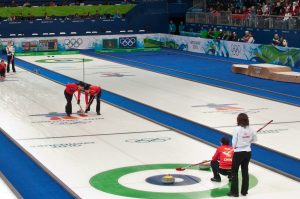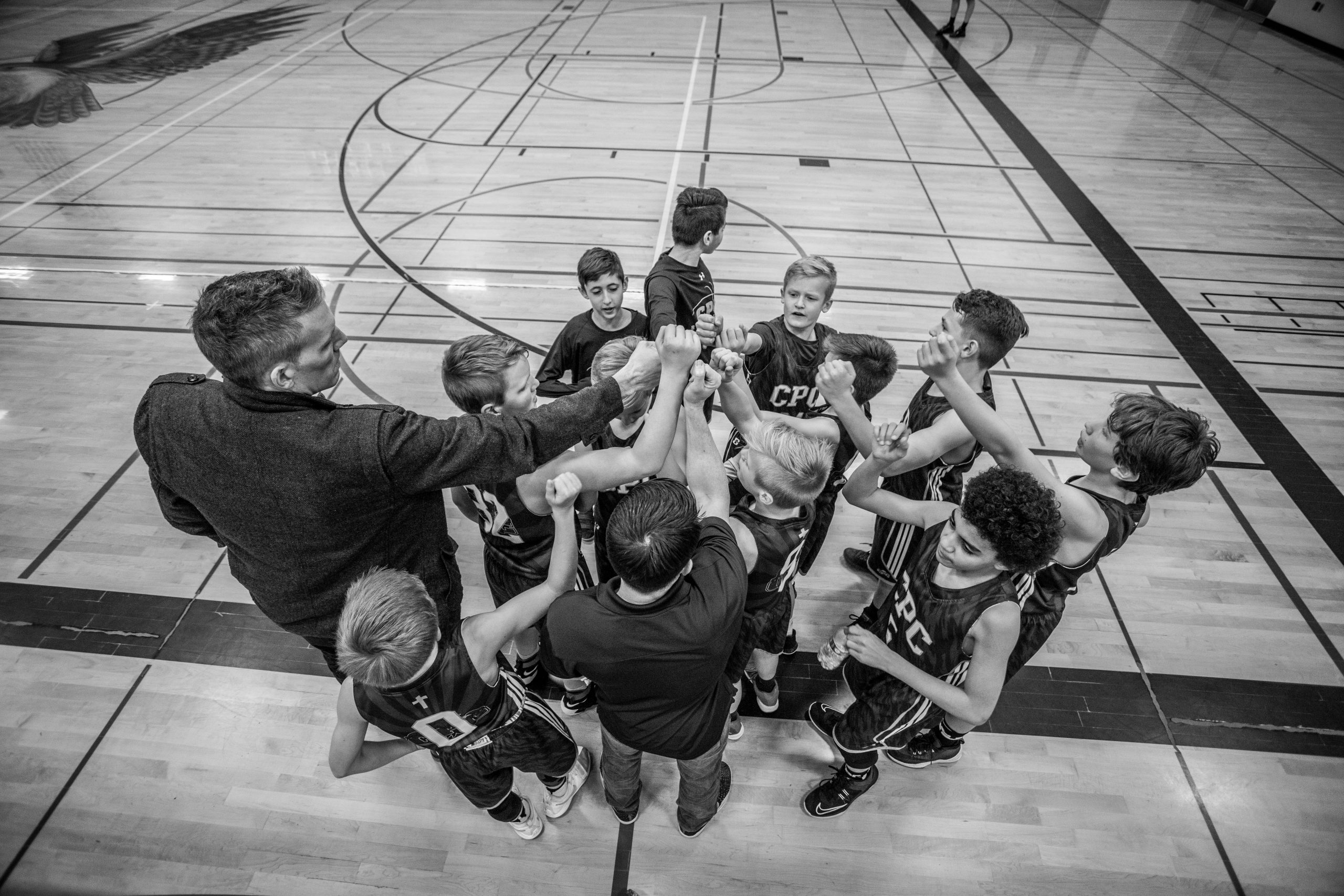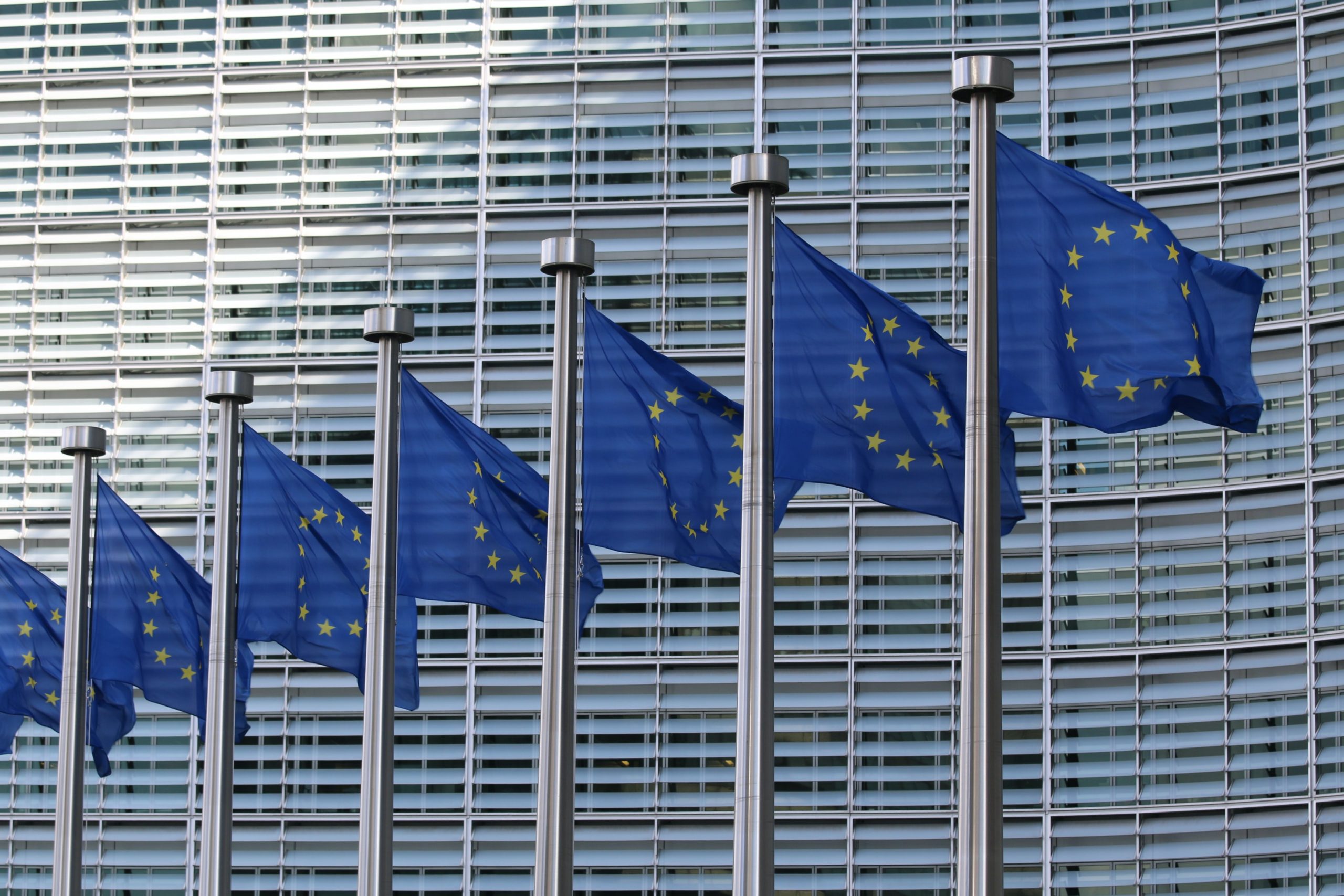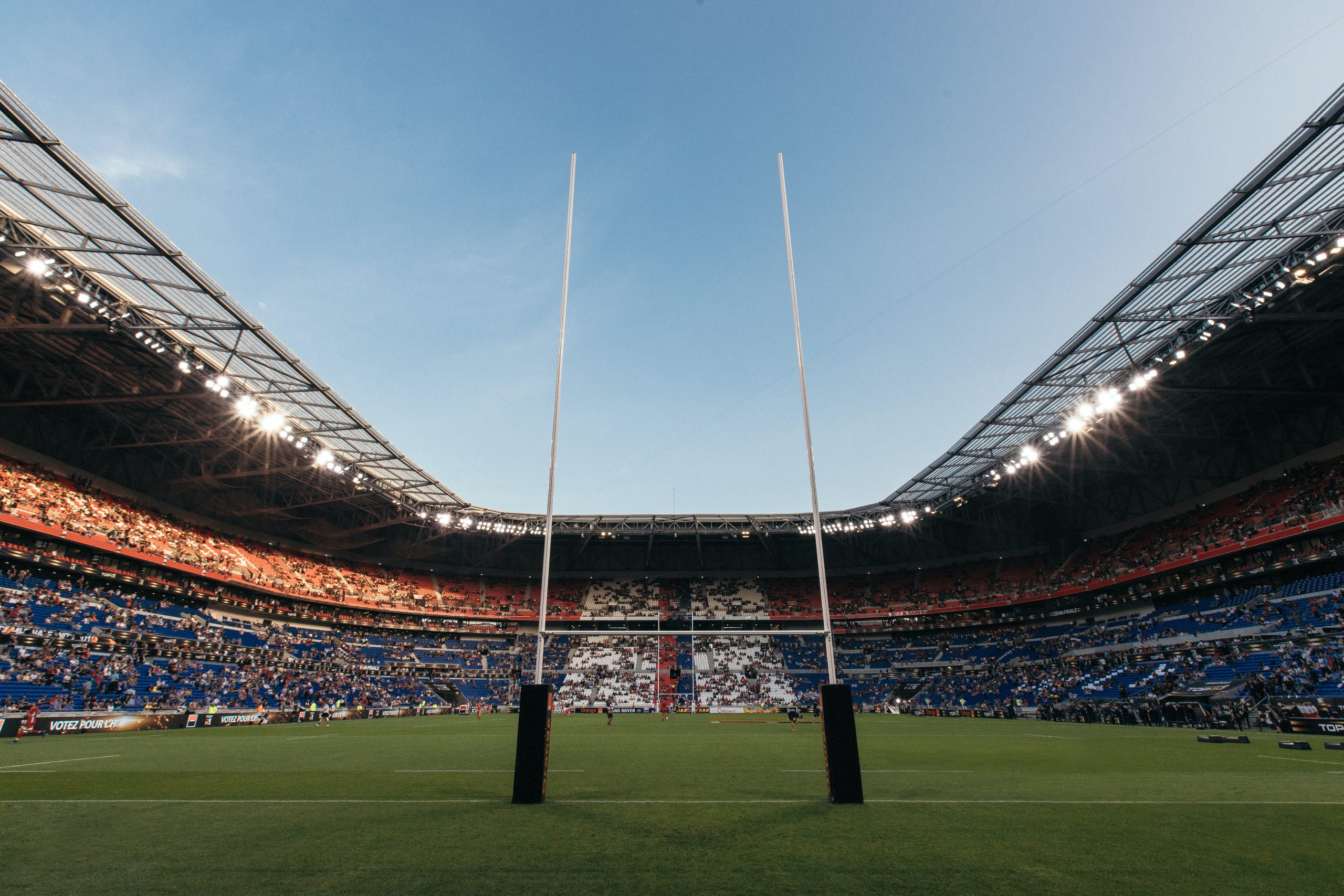5 Autonomy, Governance and Safe Sport
Julie Stevens
Peter Donnelly
Themes
Autonomy of Sport
Sport Governance
Safe Sport
Learning Objectives
When you have completed this chapter, you will be able to:
LO1 Understand the benefits, and also the problems associated with the autonomy of sport;
L02 Be better able to determine the organizational context under which abuse may occur, or may be prevented;
L03 Raise questions about sport governance in a sport organization, determine whether it is responsible, accountable and transparent; and
L04 Question whether athletes in an organization have a say in decisions that affect them, and if not, how the organization may be changed to genuinely include athletes in decision making.
Overview
It is usual to think of athlete abuse in terms of the individuals involved – the “abuser” and the “victim”. This chapter takes a larger view of the system in which athlete abuse occurs, the culture of abuse that is often seen in sport, especially high-performance sport; and the structure and organization (“governance”) of sports. The sport system may turn a blind eye to abuse, and it may cover up abuses, but it is also the system that could prevent abuses.
This chapter critiques the dominant “prolympic” sport system[1] the convergence of professional and Olympic sports both nationally and internationally, because it is widely recognized by researchers, the United Nations (UN), and non-government organizations (NGOs) such as Human Rights Watch, Transparency International and the Centre for Sport and Human Rights (CSHR) as a system that harbours abuse.[2] This does not mean that there are no exceptions – some sport clubs, organizations, and federations are run well, and are not subject to the critiques made here. Nor does it mean that the system cannot be changed. The chapter concludes with an indication of some changes that are being made.
Key Dates
Autonomy of Sport
Who makes the rules? How are they enforced?
In 2011, Belgian scholar Hans Bruyninckx pointed out that “Sports… take place in a sort of separate [autonomous] sphere, detached from normal rules and regulations in society”.[3] Autonomy refers to “the ability of a sports body, without undue external influence, to establish, amend and interpret sporting rules, to select sporting leaders and governance styles and to secure and use public funding without disproportionate obligations; this autonomy is commonly justified as an important tool through which the values inherent to sport can be safeguarded from political, legal, and in the modern era, commercial influences”.[4]
We can see this, for example, in the levels of violence that are permissible in some sports but not in the larger society. Autonomy gives those sports the right to attempt to regulate the level of violence, and to determine penalties for those who exceed a permitted level. Sport organizations also claim the right to regulate athlete abuse and to determine penalties, although the degree of conflicts of interest in such proceedings has become increasingly evident.

This autonomy came about because governments and legal systems did not wish to take on the burden of organizing and policing sport. Sport organizations assured governments and legal systems that they could organize and police themselves. However, the number of cases of violence and athlete abuse that end up in law courts raises questions about those assurances.
There are many autonomous (self-governing) organizations and institutions in societies, including universities and all of the professions. Professional standards and codes of practice are maintained by “Colleges” of, for example, teachers, lawyers, accountants, and health and medical professions which, in Canada, are organized on a provincial level. Colleges govern professionals and organizations in the public interest by ensuring that people are served by those who meet high standards of learning, competence and professional conduct, and by disciplining those who fail to meet the standards.
Sport has a very different, unregulated type of autonomy. There is no “College of Coaches” and, for the most part, each sport organization has a responsibility for governing and disciplining itself. There is no overall standard of learning, code of practice or code of conduct. Of course, autonomy has limits. Complete autonomy is not possible, although sport has attempted to make it so. For example, the European Union offers sports bodies a degree of supervised autonomy. They can exercise their autonomy as long as “they are respectful of European law and demonstrate a clear commitment to transparency, democracy, and the protection of the values of sport”.[5] However, if sport organizations had successfully practiced this form of responsible autonomy (where organizations responsibly practice good governance – transparency, accountability and democratic decision making), a supervised autonomy (where the autonomy of sport is monitored by, in this case, the European Union) would not be necessary.
Headlines for the past 40 years or more have shown that sport organizations have been remarkably effective at increasing standards of athletic performance, and at organizing themselves in ways that appeal to corporate sponsors, mass media organizations and fans. At the same time, sport organizations have been remarkably incompetent at governing and disciplining themselves. While cover-ups exist at every level of sport, here are a few examples of this troubling behaviour:
Figure 5.1 Examples of “Troubling” Sport Organization Governance and Practices
In 2000, British journalist and activist Sunder Katwala wrote, “It is difficult to think of anything that is so badly governed as international sport.”[6] He wrote this as part of his scathing review of the global sporting industry, from bidding scandals during the Olympic Games to doping charges in the Tour de France (an annual multiple-stage men’s cycling road race).
Following the corruption scandals associated with Salt Lake City’s bid for the 2002 Winter Olympics, researchers and investigative journalists began to pay increasing attention to governance in sport organizations. Their investigations frequently confirmed Katwala’s (2000) claim about the poor level of governance. Play the Game (PtG), a Danish-based sport advocacy organization, developed the Cologne Consensus (2011), one of the first steps toward a global code for good governance in sport. PtG followed by establishing a unit on Action for Good Governance in Sport[7] which, in turn, developed the Sport Governance Observer— a measurement tool to determine whether sport organizations were governed in ways that were transparent, accountable, and followed democratic principles.
Case Study:
Play the Game

Play the Game is an initiative supported by the Danish Institute of Sport Studies, an independent research centre set up by the Danish Ministry of Culture in 2004.
Check out their website to learn more about Play the Game (PtG) including its mission, vision and values, and activities with the Council of Europe, UNESCO, and the European Union (EU).
Rigorous reports are also generated by the centre – here are some to review:
- The 2021 report “National Sports Governance Observer 2: Benchmarking governance in national sports organisations” presented governance data from more than 100 federations in 15 countries on three continents.
- The 2021 report “Strengthening Athlete Power in Sport” lays out the opportunities that athletes have to provide evidence for athlete representation and influence in sport governance.
- The 2018 report by Arnout Geeraert, titled “National Sports Governance Observer. Indicators and instructions for assessing good governance in national sports federations” presents a tool for conducting research to prepare sport governance reports.
Watch an interview about Play the Game with Dr. Arnout Geeraert.
Video 5.1 National Sports Governance Observer: Play the Game
Video provided by Play the Game. Used with permission. [Transcript]
Governance and Challenges to Autonomy
Finally, autonomy is under threat! So, what happens next?
As students of sport management are well aware, governance of national and international sport organizations has changed dramatically in the last 50 years. The former system of amateur sport became politicized during the Cold War, leading countries into a “sporting arms race” based on winning Olympic Games and World Championship medals (see Chapter 3 where political forces influencing the origin of modern sport and the struggle for safe sport are addressed).[8] The growth of sponsorship and global media communications helped to commercialize this politicized sport into what we see now as a global “sportainment” industry. Governance shifted from the kitchen tables of amateur sport to a more professionalized model, with sport receiving both government and sponsor funding in many countries. However, despite accepting public (government) funding, sport organizations continued to assert their autonomy.
Just as funding from sponsors has conditions attached, public funding is usually distributed with the public interest in mind. The policies introduced by Sport Canada, which is the government agency that distributes funding to Canadian national sport organizations (NSOs), should have had the effect of regulating the autonomy of sport. These Sport Canada policies obliged NSOs to:
- Comply with Canada’s anti-doping policy;
- Introduce a policy to prevent the harassment and abuse of athletes;
- Address both grassroots participation and high-performance; and
- Implement a series of equity policies beginning with gender equity and the use of both official languages, followed by disability and Indigenous inclusion policies.
Unfortunately, these policies did not have much effect on sport organization autonomy in Canada. Initially, only the failure to introduce a harassment and abuse policy carried with it a threat of having funding withdrawn. Subsequently, with the introduction of the Sport Funding and Accountability Framework (SFAF), NSO funding became contingent on implementing the various policies.[9]
SFAF involved an annual check-list for Canadian NSOs to assure Sport Canada they were in compliance with the policies. However, in a failure of accountability, Sport Canada never completely monitored the NSOs. Whether this was because of a lack of capacity and resources at Sport Canada, or an unwillingness to challenge the organizational autonomy of sport, Sport Canada acquiesced in their autonomy and, as far as we know, funding was never withheld. For example, in the case of safe sport (the harassment and abuse policy), Donnelly et al., (2016) showed that many NSOs ignored, or only partially implemented the policy.
As a consequence, in 2018 then-Minister of Science and Sport, Kirsty Duncan, announced that addressing the abuse of athletes was a priority of her office, that “national sporting organizations will lose their federal funding if they don’t immediately disclose to her office any allegations of abuse or harassment that occur within their ranks” and “effective immediately, funding agreements also require sporting associations to establish an independent third party to investigate all allegations of abuse and have mandatory prevention training in place as soon as possible and no later than 1 April 2020”.[11] The Minister may not have been well informed by her Sport Canada staff, since these were essentially the same requirements from the 1996 harassment in sport policy that neither the NSOs nor Sport Canada had been able to implement.
Canadian NSOs saw their prime directive as developing high-performance athletes, and that was affirmed by the connection between funding and success – the more medals they won, the more public funding they received. This became even more pronounced in 2005 following the introduction of additional Own the Podium funding. Ultimately, it is believed that the failure to fully realize Sport Canada policies was a result of:
- NSO push-back against Sport Canada and a lack of will to implement these policies; and/or
- A lack of capacity on the part of many NSOs to both develop high-performance athletes and to implement these policies; and/or
- Denial that a harassment policy was needed since, they claimed, harassment did not exist in their organization; and a reluctance to add to their tasks by implementing what they considered to be social policies such as the equity and inclusion policies.
It should be noted that a number of smaller Canadian NSOs applauded the idea of an independent mechanism, or a regulatory body with the authority to implement safe sport policies, because they were prepared to admit their lack of capacity to manage a safe sport policy autonomously, and were aware of the increasing costs associated with legal action in cases of current and historical abuse.
Ongoing investigations of sport governance by researchers and investigative journalists, together with the International Olympic Committee’s (IOC) 2008 introduction (but not enforcement) of the Basic Universal Principles of Good Governance, and monitoring by the Sport Governance Observer have had an increasing impact on many sport organizations around the globe. The IOC now advocates for sport organizations to practice “responsible autonomy”. In other words, sport organizations retain their autonomy but should do so responsibly by practicing good governance. However, it is difficult to see how responsible autonomy will work in a sport culture where most of the rewards go to those organizations that will do whatever it takes to win.
As noted, the European Union offers sports bodies a degree of “supervised autonomy”.[12] Introducing supervised autonomy in Canada will both challenge and enhance sport governance. It will involve empowering and providing capacity to Sport Canada to monitor and enforce policies such that sport organizations practice good governance, are more democratic and transparent in their governance, and that public funding is spent accountably in the public interest.
The introduction of a new independent mechanism to investigate and adjudicate safe sport issues in Canada represents another step towards supervised autonomy. Just as there are independent agencies to regulate doping (Canadian Centre for Ethics in Sport or CCES) (see Chapter 11 for more details about the CCES and True Sport) and dispute resolution (Sport Dispute Resolution Centre of Canada or SDRCC), the SDRCC has now been contracted to establish the Office of the Sport Integrity Commissioner to administer the Independent Safe Sport Mechanism (more information about these entities in relation to legal considerations for safe sport is addressed in Part Four). With the very clear Universal Code of Conduct to Prevent and Address Maltreatment in Sport (UCCMS)[13] as the guiding document now in force for all NSOs in Canada, the Safe Sport Mechanism should now begin to provide athletes with a safe place to report maltreatment without retaliation from the sport organizations or the abusers; and NSOs have much clearer guidelines to prevent abuse in their organizations.
In the News:
Development of a National Independent Safe Sport Mechanism

Here’s a summary of the steps taken towards creating an independent safe sport mechanism in Canada.
- In an important first step, the 2019 Red Deer Declaration recognized the responsibility that the government has to protect its athletes.[14]
- The Canadian government followed this by committing to creating a code of conduct for sport, and the UCCMS was officially released in December, 2019.[15]
- A few months later, it was decided through further analysis of the UCCMS final report that a National Independent Mechanism (NIM) was required to administer the UCCMS as an independent body. A Request for Proposals (RFP) was announced by the UCCMS leadership group in 2020, seeking a Canadian organization to establish and deliver a NIM, or in other words, to enable the delivery of services already identified, to achieve independent administration and enforcement of the UCCMS in Canada.[16]
- In 2021 it was announced that the SDRCC was the independent body contracted to oversee the implementation of the UCCMS, via the creation and efforts of the Office of the Sport Integrity Commissioner.[17]
“We have heard the calls from the sport community for a safe, independent and trusted space to address maltreatment in sport. It is crucial that victims feel that they can speak out, call attention to harmful behaviour and challenge the system to be better. This new independent mechanism will give them the opportunity to do so in a supported environment.“[18]
What about the athletes?
In the era of politicized and commercialized sport, athletes’ voices have, for the most part, been silenced. Despite sport organizations making positive statements (rather than actions) about human rights in sport in the last few years, the position of some international sport organizations on human rights in the commercial world of modern “prolympic” sport was made very clear recently. For example, FIFA has done very little to relieve the plight of construction workers whose rights are being violated while building the facilities for the Qatar 2022 World Cup. And in a statement about sex testing women athletes (another human rights issue), World Athletics identified itself as “a private body exercising private (contractual) powers… [and] not subject to human rights instruments such as the Universal Declaration of Human Rights (UDHR) or the European Convention on Human Rights”.[19] The UN High Commissioner on Human Rights reported that there is no existing mechanism to assure compliance with human rights by the International Olympic Committee and International Federations. These positions all filter down to national levels, and athletes’ rights have not been given consideration in decision-making in sport.[20]
Despite claims that, in Canada for example, following the Ben Johnson doping scandal at the Seoul Olympics (1988) and the subsequent Dubin inquiry (1990), sport was to be more “athlete-centred”, only token actions were taken in the 1990s. Some examples of this include appointing a single athlete to the Board of a Canadian NSO or establishing relatively powerless Athletes’ Commissions at the IOC and at National Olympic Committees. That has begun to change in recent years and athletes are beginning to become more involved in making the decisions that affect them.
Video 5.2 Peter Donnelly: Athletes Rise
Video provided by Dr. Michele Donnelly, Panel Moderator and Dr. Michael Van Bussel, Conference Chair, 2021 Safe Sport Forum; and Dr. Julie Stevens, Director, Centre for Sport Capacity, Brock University. Used with permission. [Transcript]
In the lead up to a strike in 1982, the National Football League Players’ Association (NFLPA, 1981) declared, “We Are the Game”, and it has become increasingly evident that, without athletes, there would be no sport – no need for sport organizations, no political bragging rights, no profits for all of the people who take a profit from international and professional sports events.[21] Athletes began to realize their potential power as investigations increasingly showed how badly sport organizations were governed, how badly many athletes were treated, and how little input athletes had into decisions that affected everything about their career as athletes.
The increasing power of athletes has been associated with the increasing recognition of the violation of human rights in sport. It has been spurred by the courageous voices of some athletes speaking out against abusers, against sex testing, against exploitation; but it has been most evident in the growth of athletes’ organizations and unions (e.g., AthletesCAN, Global Athlete). See Suggested Assignments 3 at the end of this chapter for three examples of Canadian athletes who spoke up and helped to make a difference: Ted Lindsay, Ann Peel, Allison Forsyth.
In Canada, athletes have gone from one seat on the Board to determining the postponement of the Tokyo 2020 Olympics[22] in a very short time, and AthletesCAN sponsored the prevalence study which found that, of 1,001 current and retired national team athletes, 67% of current athletes and 76% of former athletes reported experiencing at least one form of maltreatment mostly at the hands of their coaches.[23] Through AthletesCAN, athletes became a key voice in developing the UCCMS and in lobbying for the Independent Safe Sport Mechanism.

Full application of an athlete-centred policy would give athletes the right to be involved in every decision that affects them; and a truly democratic system would see coaches and sport organizations working in the service of athletes.
A Culture of Control
The unregulated autonomy of sport, the absurd and oxymoronic popularity of authoritarian coaching which takes highly motivated athletes and uses bullying and punitive coaching practices to motivate them, the failure to consider athletes’ rights, and the single-minded focus on medals, have created a culture of control in the “prolympic” sport system. When dealing with highly motivated individuals such as athletes, implementing authoritarian coaching practices speaks to, frankly, a poverty of the imagination. What we are dealing with is a systemic issue, and prevention requires more than getting rid of “a few bad apples.” Changing cultures and social structures is slow, and it is difficult. But perhaps we are seeing the first steps in changing the culture and structure of sport with challenges to the autonomy of sport, and with the active measures being taken to address safe sport.
 Self-Reflection
Self-Reflection
- Apply the Sports Governance Observer tool to your own sport organization (including university athletics departments). How transparent, democratic and accountable is your organization? Do athletes have a voice in running the organization, and are their concerns heard? How “safe” is your organization, and what procedures are in place if an athlete is concerned the s/he or another athlete may be suffering from maltreatment (as defined in the UCCMS)?
Key Terms
Suggested Assignments
- Analyzing a case study: Take the case of Megan Brown regarding alleged abuse by former University of Guelph and Team Canada coach Dave Scott-Thomas. (Content note: discusses sexual abuse). Read the linked article, and as many other articles that you can find about her case. Provide an in-depth analysis of who (individuals, organizations, institutions) was to blame for Megan’s abuse. How many bystanders and enablers knew about or suspected that she was being abused (or at least in a completely inappropriate and illegal relationship with her coach)? What policies and rules were in place at the track club, and at the University of Guelph that were not enforced? What steps might be taken in such organizations to prevent this from ever happening again?
- Sport Governance Observer (SGO) Group Assignment: Each person in a group applies the SGO benchmarking tool to a sport club or provincial sport organization that they are familiar with. Compare the results, and develop a plan to for the clubs and PSOs to become good governance organizations, focusing particularly on safe sport and athlete inclusion in decision making.
- Speaking Out: Some examples of Canadian athletes who spoke up and helped make a difference include those noted in the list below. Choose one of the people below and research their story. What steps did these individuals take to change their sport? How did their sport organizations respond?
- NHL player Ted Lindsay, who led the movement in the 1950s to unionize professional players (NHLPA) despite powerful resistance from team owners.
- International race walker Ann Peel, who in the 1990s fought and won against Sport Canada’s automatic reduction of Athlete Assistance Programme funding for pregnant athletes.
- Alpine skier Allison Forsyth, who testified against Alpine Ski coach, Bertrand Charest, for engaging in sexual relations with under-age girls on the national Alpine ski team; more recently (2019) she led a class action suit against Alpine Canada for failing to protect young athletes. (See also Chapter 2 for more about Allison Forsyth.)
Figure Descriptions
Figure 5.1 This interactive figure depicts four examples of “troubling” sport organization practices. These include complicity, financial corruption and cronyism, conflicts of interest, and violation of athletes’ rights. [return to text]
Sources
Action for Good Governance in International Sport Organizations (AGGIS). (2012). Retrieved January 7, 2022. https://playthegame.org/theme-pages/action-for-good-governance-in-international-sports-organisations/
Bruyninckx, H. (2011). Obsession with rules vs. mistrust in being ruled. Play the Game Conference, Cologne, Germany.
Canadian Centre for Ethics in Sport (CCES). (n.d.). Retrieved December 31, 2021, from https://cces.ca
Canadian Heritage. (2021, July 6). Minister Guilbeault announces new independent safe sport mechanism. Government of Canada. Retrieved October 27, 2021, from https://www.canada.ca/en/canadian-heritage/news/2021/07/minister-guilbeault-announces-new-independent-safe-sport-mechanism.html
Canadian Intergovernmental Conference Secretariat. (2019, February 15). Red Deer Declaration – For the prevention of harassment, abuse and discrimination in sport. Retrieved December 9, 2021, from http://scics.ca/en/product-produit/red-deer-declaration-for-the-prevention-of-harassment-abuse-and-discrimination-in-sport/
Canadian Safe Sport Program. (2020). Sport Information Resource Centre: Universal Code of Conduct to Prevent and Address Maltreatment in Sport (UCCMS), (5)1, 1-16. https://sirc.ca/wp-content/uploads/2020/01/UCCMS-v5.1-FINAL-Eng.pdf
CBC (2018). National sports organizations have to report allegations of abuse immediately. Retrieved January 7, 2022 from https://www.cbc.ca/news/politics/sport-harassment-abuse-1.4712734
CBC Sports. (2016, January 13). COC boss on Marcel Aubut scandal: ‘We could have done more’. Retrieved December 31, 2021, from https://www.cbc.ca/sports/olympics/2.6458/coc-boss-on-marcel-aubut-scandal-we-could-have-done-more-1.3401842
Centre for Sport and Human Rights. (n.d.). Retrieved December 31, 2021, from https://www.sporthumanrights.org
Chappelet, J-L. (2010). Autonomy of sport in Europe. Strasbourg: Council of Europe Publishing.
Chataway, C., & Goodhart, P. (1968). War without weapons. London: W.H. Allen.
Donnelly, P. (1996). Prolympism: Sport monoculture as crisis and opportunity. Quest, 48, 25–42.
Donnelly, P. (2009, December). Own the Podium or rent it: Canada’s involvement in the global sporting arms race. Policy Options. Retrieved January 12, 2022, from https://policyoptions.irpp.org/magazines/the-2010-olympics/own-the-podium-or-rent-it-canadas-involvement-in-the-global-sporting-arms-race/
Donnelly, P. (2015). ‘We are the Game’?: Player democratization and the reform of sport governance. In, Y. Vanden Auweele, E. Cook & J. Parry, (Eds.), Ethics and governance in sport: The future in sport imagined (pp. 102-108). London: Routledge.
Donnelly, P. (2020). We are the games: The COVID-19 pandemic and athletes’ voices. Sociología del Deporte, 1(1), 35-40. https://www.upo.es/revistas/index.php/sociologiadeldeporte/article/view/5009/4507
Donnelly, P., Kerr, G., Heron, A., & DiCarlo, D. (2016). Protecting youth in sport: An examination of harassment policies. International Journal of Sport Policy and Politics 8(1): 33–50.
Dubin, C. (1990). Report of the commission of inquiry into the use of drugs and banned practices intended to increase athletic performance. Ottawa: Canadian Government Publishing Centre. https://www.doping.nl/media/kb/3636/Dubin-report-1990-eng%20(S).pdf
Francis, A. (2019, May 9). AthletesCAN survey finds strong prevalence of maltreatment of athletes. Running Magazine. Retrieved December 31, 2021, from https://runningmagazine.ca/the-scene/athletescan-survey-finds-strong-prevalence-of-maltreatment-of-athletes/
Geeraert, A. (2018). National sports governance observer. Final report. Play the Game. Retrieved December 31, 2021, from https://playthegame.org/knowledge-bank/publications/national-sports-governance-observer-final-report/ee07c9d7-130d-4599-a9ba-a996008fb1a4
Geeraert, A. (2021). National anti-doping governance observer. Indicators and instructions for assessing good governance in national anti-doping organisations. Play the Game. Retrieved December 31, 2021, from https://playthegame.org/knowledge-bank/publications/national-antidoping-governance-observer-indicators-and-instructions-for-assessing-good-governance-in-national-antidoping-organisations/4b669297-3924-4875-a98b-ad3400e62fd2
Geeraert, A. & Bruyninckx, H. (2014). You’ll never walk alone again: The governance turn in professional sports. In, J. Mittag & S. Güldenpfennig (Eds.), Sportpolitik im spannungsfeld von autonomie und regulierung: Grundlagen, akteure und konfliktfelder (pp. 1-23). Klartext Verlag: Essen.
Government of Canada. (2020a, March 17). Spot funding and accountability framework. Retrieved December 31, 2021, from https://www.canada.ca/en/canadian-heritage/services/funding/sport-support/accountability-framework.html
Government of Canada. (2020b, December 18). Application guidelines – Independent safe sport mechanism. Retrieved January 5, 2021, from https://www.canada.ca/en/canadian-heritage/services/funding/sport-support/independent-safe-sport-mechanism/application-guidelines.html
Human Rights Watch. (2020, December 4). “They’re chasing us away from sport”. Retrieved December 31, 2021, from https://www.hrw.org/report/2020/12/04/theyre-chasing-us-away-sport/human-rights-violations-sex-testing-elite-women#
International Amateur Athletic Federation (IAAF). (2019, May 7). IAAF publishes briefing notes and Q&A on female eligibility regulations. Retrieved December 31, 2021, from https://www.worldathletics.org/news/press-release/questions-answers-iaaf-female-eligibility-reg
International Olympic Committee (IOC). (2008). Basic universal principles of good governance of the Olympic and sports movement. https://stillmed.olympic.org/Documents/Conferences_Forums_and_Events/2008_seminar_autonomy/Basic_Universal_Principles_of_Good_Governance.pdf
IOC. (n.d.). Universal principles for integrity. Retrieved December 31, 2021, from https://olympics.com/ioc/integrity/universal-principles-for-integrity
Joyce, G. (2019, March 4). Lindsay knew fighting for players’ rights would hurt, but he did anyway, Sportsnet. Retrieved December 31, 2021, from https://www.sportsnet.ca/hockey/nhl/lindsay-knew-fighting-players-rights-hurt-anyway/
Katwala, S. (2000). Democratising global sport. London: The Foreign Policy Centre.
Kerr, G., Willson, E., & Stirling, A. (2019). Prevalence of maltreatment among current and former national team athletes. University of Toronto. 1–51. https://athletescan.com/sites/default/files/images/prevalence_of_maltreatment_reporteng.pdf
Kunti, S. (2019, December 28). Crashing down: A decade of corruption cripples FIFA. Forbes. Retrieved December 31, 2021, from https://www.forbes.com/sites/samindrakunti/2019/12/28/crashing-down-a-decade-of-corruption-cripples-fifa/?sh=7dc8621f6cd4
Larsen, K. (2019, June 26). B.C. skier launches class-action lawsuit against over coach convicted of sex crimes. CBC News. Retrieved December 31, 2021, from https://www.cbc.ca/news/canada/british-columbia/allison-forsyth-class-action-alpine-canada-bertrand-charest-1.5190627
Office of the Sport Integrity Commissioner. (n.d.). Retrieved December 31, 2021, from https://sportintegritycommissioner.ca
Own the Podium. (n.d.). Retrieved December 31, 2021, from https://www.ownthepodium.org/en-CA/
Parrish, R. (n.d.). The autonomy of sport: A legal analysis. Sport and Citizenship. Retrieved December 31, 2021, from https://www.sportetcitoyennete.com/en/articles-en/the-autonomy-of-sport-a-legal-analysis
Peel, A. (2019, February 26). The over-regulation and under-protection of the female athlete. The Chester Group. Retrieved December 31, 2021, from https://chestergroup.ca/2019/02/26/the-over-regulation-and-under-protection-of-the-female-athlete/
Play the Game. (2011). The Cologne Consensus. https://www.playthegame.org/fileadmin/documents/Cologne_Consensus.pdf
Play the Game. (2017, September 19). National sports governance observer – Interview with Arnout Geeraert [Video]. Youtube. https://www.youtube.com/watch?v=Lt1jxcy9cc0
Play the Game. (2019). Sports governance observer – Benchmarking governance in international sports organizations. Retrieved December 31, 2021, from https://playthegame.org/theme-pages/the-sports-governance-observer/
Play the Game. (2021, September). Strengthening athlete power in sport. https://www.playthegame.org/media/10753881/Strengthening-Athlete-Power-in-Sport_lit-review.pdf
Play the Game. (2021, November). National sports governance observer 2: Benchmarking governance in national sport organisations. https://www.playthegame.org/media/10855857/National-Sports-Governance-Observer-2_Final-report.pdf
Play the Game. (n.d.). About play the game. Retrieved December 31, 2021, from https://playthegame.org/about/
Play the Game. (n.d.). Use the SGO benchmarking tool yourself and compare with previous data. Retrieved December 31, 2021, from https://playthegame.org/theme-pages/the-sports-governance-observer/use-the-sgo-benchmarking-tool/
Quinn, H. (1982, October 4). The lights go out on the NFL. MacLeans. Retrieved December 31, 2021, from https://archive.macleans.ca/article/1982/10/4/the-lights-go-out-on-the-nfl
Running Magazine. (2020, February 8). Megan Brown shares her story about what happened at Guelph. Retrieved December 31, 2021, from https://runningmagazine.ca/the-scene/megan-brown-shares-her-story-about-what-happened-at-guelph/
Sport Dispute Resolution Centre of Canada (SDRCC). (n.d.). Retrieved December 31, 2021, from http://www.crdsc-sdrcc.ca/eng/home
SIRC. (n.d.). Policies & procedures. Retrieved December 30, 2021, from https://sirc.ca/safesport/policies-practices/
Sports Research Institute. (n.d.). About the Danish Institute for Sport Studies. Retrieved December 31, 2021, from https://www.idan.dk/about-idan/
The Associated Press. (2018, December 18). Despite 2002 bribery scandal, Salt Lake City aims to host 2030 Winter Olympics. Retrieved December 31, 2021, from https://www.cbc.ca/sports/olympics/salt-lake-city-2030-winter-olympics-1.4951389
United Nations High Commissioner for Human Rights (UNHCHR). (2020, June 15). Intersection of race and gender discrimination in sport: Report of the United Nations High Commissioner for Human Rights. Retrieved December 31, 2021, from https://digitallibrary.un.org/record/3872495?ln=en
- Donnelly, 1996 ↵
- Erin Willson provides strong evidence of the prevalence of athlete maltreatment in Canadian sport (see Chapter 2); and there have been well-publicized examples of sexual abuse in Canadian boys' hockey, English boys' soccer, girls' gymnastics and swimming in the US, and women's soccer in countries such as Afghanistan and Haiti ↵
- Bruyninckx, 2011 ↵
- Chappelet, 2010; Parrish, n.d. ↵
- Geeraert & Bruyninckx, 2014, p. 11 ↵
- Katwala, 2000, p. 90 ↵
- AGGIS, 2012 ↵
- Chataway & Goodhart, 1968; Donnelly, 2009 ↵
- Accountability is one of the key components of good governance -- in this case accounting for the sources of all funding, how it has been spent, and why it has been spent. ↵
- Geeraert & Bruyninckx, 2014, p. 11 ↵
- CBC, 2018 ↵
- Geeraert & Bruyninckx, 2014, p. 11 ↵
- Canadian Safe Sport Program, 2020 ↵
- Canadian Intergovernmental Conference Secretariat, 2019 ↵
- Canadian Safe Sport Program, 2020 ↵
- Government of Canada, 2020b ↵
- Canadian Heritage, 2021 ↵
- The Honourable Steven Guilbeault as cited in Canadian Heritage, 2021, para. 4 ↵
- IAAF, 2019 ↵
- UNHCHR, 2020 ↵
- Donnelly, 2015 ↵
- Donnelly, 2020 ↵
- Kerr et al., 2019 ↵
Where organizations responsibly practice good governance – transparency, accountability and democratic decision making.
Where the autonomy of sport is monitored by, in this case, the European Union.
Independent body charged with overseeing operational aspects of the Universal Code of Conduct to Prevent and Address Maltreatment in Sport (UCCMS). In Canada, the SDRCC has been named as the NIM to oversee the UCCMS. A regulatory body with the authority to implement safe sport policies.


 Counterpoint:
Counterpoint:


